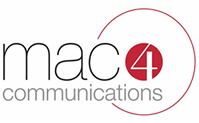Surveys are great tools for generating media attention and thought leadership. But developing, completing, and analyzing a professional survey requires a serious investment of resources. Therefore, be sure from the outset that you know exactly how you want to use the survey results in your marketing efforts. Otherwise, you may find that your survey was a very expensive waste of time. Consider these all-too-common problems:
- The results prove the opposite of what you expected. Ouch! This is serious. Test the waters before you invest in a full-blown survey. You may discover that your assumptions about the market/industry/etc. were incorrect. If so, go back to the drawing board!
- The original objective of the survey is no longer a marketing priority. Surveys can take months to complete. During that time, marketing priorities may shift so that the survey results are, candidly, irrelevant to current marketing efforts. Before you say “Go,” make sure that the objective of the survey has marketing longevity.
- The results are ambiguous. Developing survey questions that produce clear, decisive insights is challenging. Unfortunately, you may be too “close” to the subject matter to realize that a question can be read by respondents in various ways. Run survey questions by people in your target demographic, and ask them what they understood each question to mean. If you find out after the fact that people had differing views as to the meaning of the questions, you will have to throw out the answers.
- The survey didn’t capture all the information needed for subsequent marketing campaigns. For example, if you plan to write four thought leadership pieces based on the survey results, make sure the questions will generate sufficient data in all four areas of interest! Otherwise, you may run into the scenario of trying to develop an entire thought leadership piece based on one isolated piece of data instead of on a set of interrelated statistics that supports a solid perspective.
- The survey results don’t tell a story. Individual survey questions can be good and valid in and of themselves, yet not combine with one another to create a single compelling story. When developing a survey, be sure to look at the macro picture as well as the micro picture. The questions – and eventually the results – should be able to be woven together into a powerful narrative.
With careful planning, you can avoid all these pitfalls – and your next survey will get all the positive attention and outcomes you desire!
Author: Paula Marolewski

